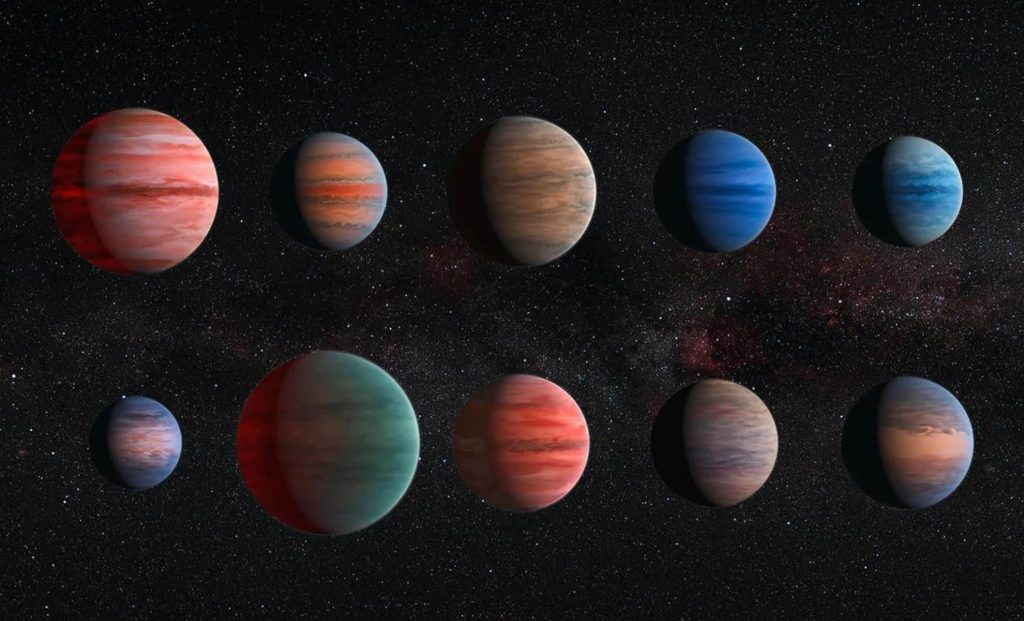NASA recently announced a major milestone in its ongoing search for exoplanets, confirming more than 5,500 exoplanets.
This milestone not only highlights the rapid advances being made in astronomy technology, but also deepens our understanding of the vastness of the universe and the possibility of life on other planets.
The discovery of these exoplanets scattered across the galaxy provides a fascinating glimpse into the diversity and complexity of planetary systems beyond our own.
A brief history of exoplanet discovery
The journey of exoplanet discovery began in earnest in 1992, a groundbreaking year when astronomers identified a planet orbiting the pulsar PSR B1257+12. Poltergeist and PhobeterThese planets were identified for the first time. ExoplanetsIt revolutionized our view of the universe and opened up new fields of research in astronomy.
The importance of this discovery cannot be overemphasized. planet Outside the solar systemmany theoretical considerations were transferred into the realm of observable science. Since this groundbreaking discovery, advances in detection methods and technology have only accelerated the pace of discovery.
By March 2022, The number exceeds 5,000. Each new discovery adds complexity and intrigue to our understanding of planetary formation and the conditions in which life can thrive.
Recent Discoveries: 6 New Exoplanets
Recent additions to the exoplanet catalog include: Six particularly fascinating worldsEach has its own unique characteristics.
HD 36384 b
this is Super Jupiteris a gas giant planet much larger than Jupiter that orbits an M-giant star. Its discovery was made using the radial velocity method, which detects the change in the star’s speed due to the planet’s gravity. HD 36384 b host star It is about 40 times more massive than the Sun, making it a particularly interesting system for studying the dynamics of massive stars and their planets.
TOI-198b
Located at the inner edge of the star’s habitable zone, TOI-198b Potentially Rocky planet. The habitable zone is often “The Goldilocks Zone,” is a region around a star where conditions may be just right for liquid water, a key ingredient for life as we know it. The planet was detected using the transit method, which measures the dimming of a star’s light as the planet passes in front of it.

TOI-2095 b and TOI-2095 c
Both of these planets are classified as large. Hot Super-Earthorbiting M dwarfsM dwarfs are smaller and cooler than the Sun, but are the most common type of star in the Milky Way galaxy. TOI-2095b And c may be more similar to Venus than to Earth in terms of atmospheric conditions, providing valuable data on the diversity of planet types that can exist around these common stars.


TOI-4860b
Known as Hot Jupiter TOI-4860b Hot Jupiters are known for their extremely short orbital periods of just 1.52 days. Hot Jupiters are gas giants that orbit very close to their parent stars, often resulting in extremely high atmospheric temperatures. The discovery of such planets calls into question traditional models of planet formation and migration, suggesting that these planets may form further out in the system and then migrate inwards.

MWC 758c
This giant protoplanet orbits a very young star whose protoplanetary disk was discovered by direct imaging, a method that takes actual pictures of exoplanets and is particularly useful for studying young planetary systems. MWC 758c “The discovery of the stellar disk, known as the “spiral arm” of the Sun, provides a snapshot of the early stages of planetary formation and offers clues about how planets and their systems evolve.”

Exoplanet detection technology
Detecting exoplanets Exoplanets pose great challenges to overcome due to their small size and faint brightness compared to their host stars. To identify these distant planets, astronomers use a variety of advanced techniques that reveal different aspects of exoplanet properties. These methods include radial velocity methods, transit photometry, direct imaging, gravitational microlensing and astrometry.

Each technique is Discovery of exoplanets They also provide valuable data about their physical properties and atmospheres, improving our understanding of other planetary systems. Let’s take a closer look at these methods.
Radial Velocity MethodAlias: Doppler methodThe technique measures tiny wobbles in a star’s motion caused by the gravity of an orbiting planet. These wobbles affect the spectrum of the star’s light, shifting it slightly towards the red or blue end, depending on whether the star is moving closer to or farther from Earth. This method helped discover many of the first exoplanets discovered, and is the basis of planet detection.
Transit MethodThe transit method, currently the most widely used method, involves observing the periodic dips in the stellar light curve that occur when a planet passes in front of its host star. Detecting the presence of planets It also provides data on the planet’s size and atmospheric composition, if the planet has a detectable atmosphere.
Direct ImagingThis technology has Taking images of planets They photograph the star’s light by blocking it with an instrument called a coronagraph. This is difficult because stars are much brighter than planets, but direct imaging can help study young, hot planets and provide detailed views of their atmospheres and weather patterns.
Gravitational microlensing effectThis method uses the planet’s gravitational field as a lens, magnifying the light from a more distant star behind it. The technique is especially useful for finding planets that would otherwise be impossible to find. Hard to detectFor example, those that are far away from their stars or in binary star systems.
Astronomical Survey: This oldest planet detection method involves measuring the precise motion of a star across the plane of the sky, looking for tiny changes caused by the gravitational influence of an orbiting planet. It is more difficult than other methods and is less commonly used, but Astronomical measurements It’s especially useful for finding planets around very bright stars where other methods don’t work well.



